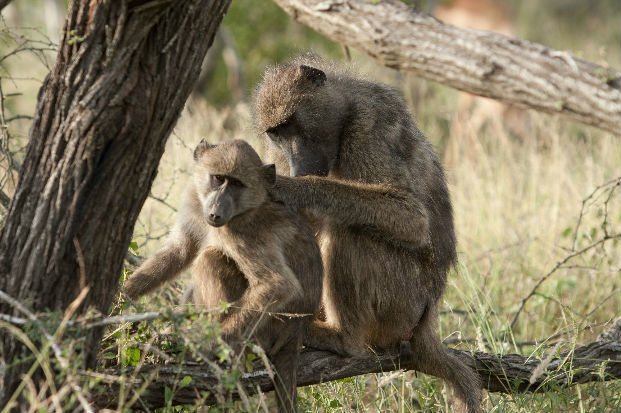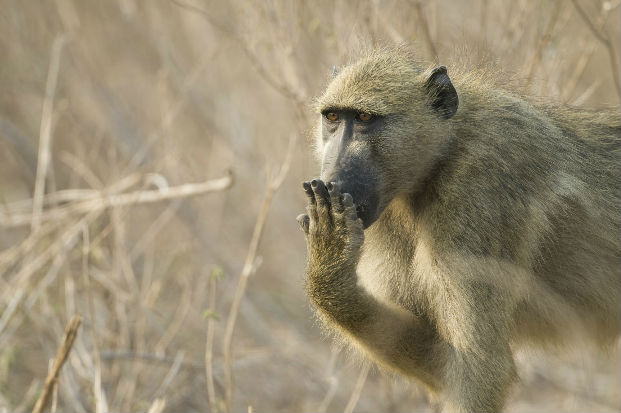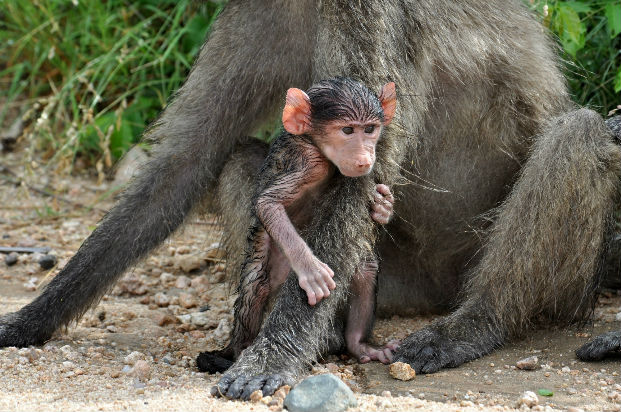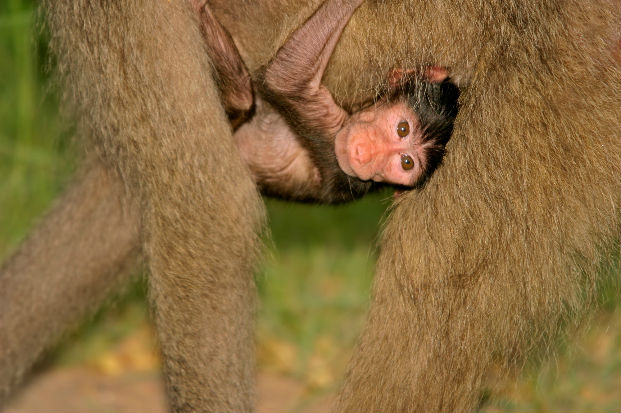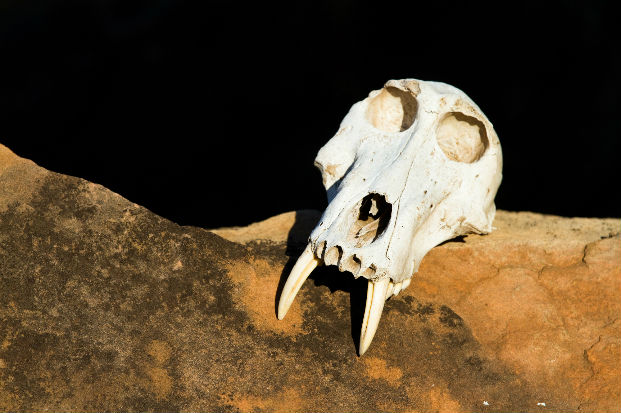As long as baboons have access to food, water and roosting sites they can live anywhere, those living in the suburbs of many cities like Cape Town are testament to this. Baboons are not territorial but they will aggressively compete with other troops over resources. Baboon troops may number as many as 100 individuals but 30 to 40 are the norm with males being outnumbered three to one by females. In the troop all males out rank females. However, females have their own hierarchy with offspring inheriting the rank of their mother.
Vote for the fact you find most fascinating
If disturbed at night by a predator the roosting baboons deter it by screaming, shaking branches as well as defecating and urinating on the offender below.
A baboon’s mouth has pouches on the inside that are capable of fitting as much food in as their stomach. This allows them to raid a food source and retreat to eat their stash at leisure.
The species name, cynocephalus, means “dog-headed” referring to the baboon’s appearance.
A male baboon’s canine teeth are of a similar size to that of a lion.
On occasions adult male baboons will hunt meat such as hares and baby impala which they will rip apart and eat with their hands.
Female baboons with a young black baby will be temporarily elevated in status due to the other baboon’s fascination in her baby.
Baby baboons will first cling to their mother’s stomach. As they get older, five weeks, they will switch to riding jockey style on her back, the mothers kinked tail acts as a back rest.
Baboons have callosities of thickened skin on their buttocks which have developed to cushion them during their long periods spent sitting down whilst they feed.
If a baby baboon were to die its mother may carry it round for days showing signs of confusion and frustration.


